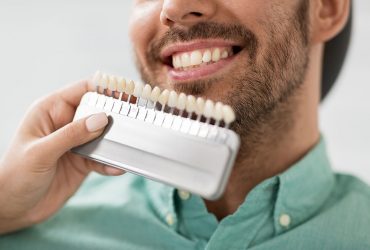Diagnostic Imaging of the Temporomandibular Joint
Radiographic evaluation is very helpful in the diagnostic process and cone beam CT technology makes accessibility to low cost, low radiation CT scans. Magnetic resonance imaging (MRI) is one of the best diagnostic tools for identification of TMJ pathology, allowing evaluation of TMJ disc position, morphology, mobility, extent of joint degenerative changes, inflammation, and presence of connective tissue/autoimmune diseases. Importantly it can help in the diagnosis of TMJ pathology in the silent joint where disc displacement and degenerative changes can be present but may not make noise or be particularly uncomfortable or painful but yet result in poor outcomes if only orthognathic surgery is performed. CT scans, bone scans, 3-D imaging, 3-D modeling, etc. may be beneficial for some patients.

We help you with the dedication & affection
Before deciding to undergo any cosmetic procedure, it's important to know the benefits and risks and what you can expect during the process. Make sure you're clear about what it will cost, how much experience your dentist has with the procedure, and whether any special maintenance will be needed afterward.
01. Stained or discolored teeth
Using a chemical process, your dentist can bleach your teeth in one of two ways. He can do an in-office procedure, or provide you with a system to use at home.
02. Bonding materials for filling small cavities
Bonding may improve how your teeth look if they have excess space between them, or if they are chipped, broken, stained, or cracked. Dentists also use bonding materials to fill small cavities or to protect the exposed root of a tooth.
03. Porcelain veneer teeth covering
These custom shells, typically made of porcelain (sometimes plastic), cover the front sides of the teeth to change their color and/or shape. Veneers last longer than bonding and provide a superior appearance.
04. Using dental crowns (metal, resin, ceramics)
Crowns can be made from metal, porcelain fused to metal, resin, or ceramic materials. Because crowns are costly, dentists usually suggest them only when other procedures can't produce a pleasing result.








